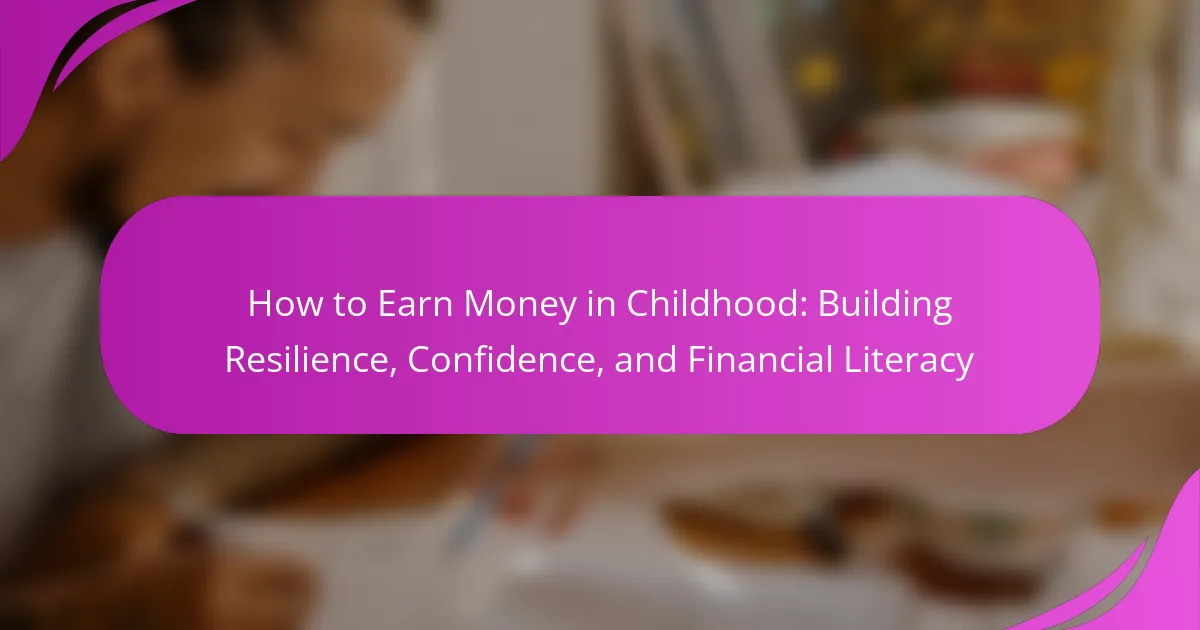Self-discipline books can significantly aid in overcoming anxiety, boosting focus, and enhancing emotional resilience. They provide practical strategies, such as mindfulness techniques and goal-setting frameworks. These resources emphasize personal accountability and the importance of consistency in practice. Additionally, many incorporate self-reflection exercises and diverse psychological perspectives to foster deeper engagement and applicability.
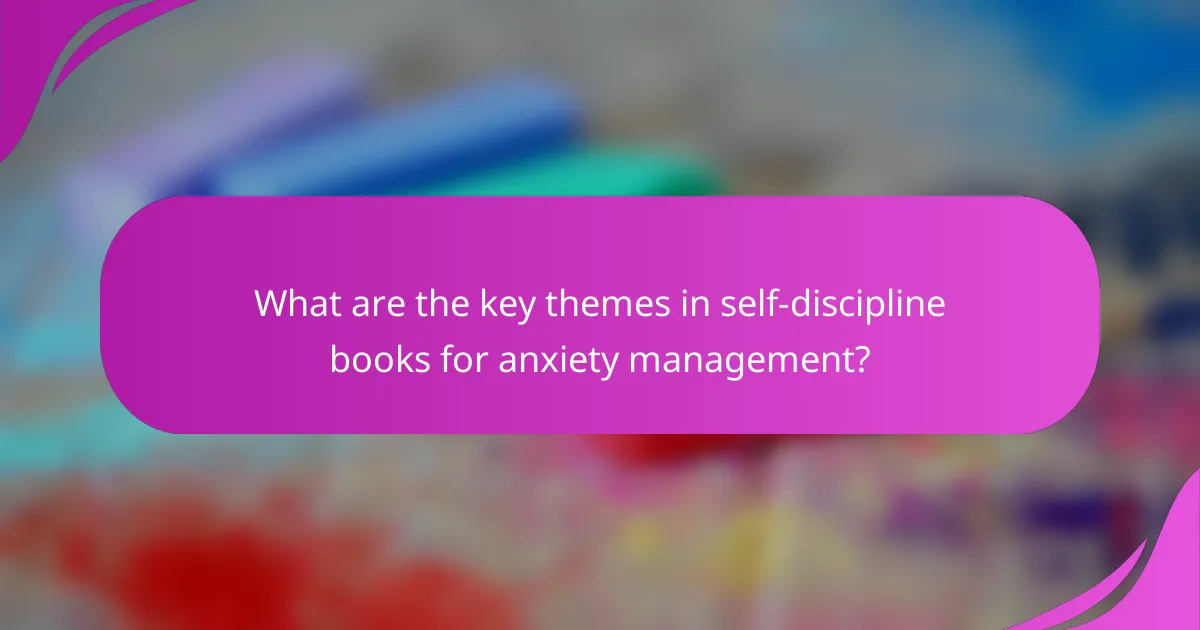
What are the key themes in self-discipline books for anxiety management?
Self-discipline books for anxiety management emphasize themes of personal accountability, emotional regulation, and focus enhancement. These books often provide practical strategies, such as mindfulness techniques and goal-setting frameworks, to cultivate resilience. They encourage readers to develop routines that promote self-awareness and reduce anxiety triggers. Additionally, many highlight the importance of consistency in practice, which can lead to long-term emotional stability.
How do self-discipline techniques specifically address anxiety symptoms?
Self-discipline techniques effectively reduce anxiety symptoms by fostering control and predictability in daily life. These techniques, such as structured routines and goal-setting, help individuals manage stressors and improve focus. Research indicates that self-discipline enhances emotional resilience, allowing individuals to cope better with anxiety triggers. Practicing delayed gratification, a unique attribute of self-discipline, can lead to improved decision-making under pressure, further alleviating anxiety symptoms.
What role does emotional resilience play in overcoming anxiety?
Emotional resilience significantly aids in overcoming anxiety by enhancing coping strategies. It allows individuals to manage stress effectively, reducing anxiety’s impact. Self-discipline books provide practical techniques that foster emotional resilience, such as mindfulness and goal-setting. These strategies not only improve focus but also empower individuals to navigate challenges more confidently, ultimately leading to reduced anxiety levels.
What strategies enhance emotional resilience in self-discipline literature?
Practicing mindfulness, setting realistic goals, and cultivating a growth mindset enhance emotional resilience in self-discipline literature. Mindfulness techniques help manage anxiety and improve focus, while realistic goal-setting fosters achievable progress. A growth mindset encourages resilience by viewing challenges as opportunities for learning.
How can self-discipline improve focus and productivity?
Self-discipline significantly enhances focus and productivity by fostering consistency in habits and reducing distractions. It cultivates a mindset that prioritizes long-term goals over short-term gratification. According to research, individuals with strong self-discipline tend to achieve higher levels of performance in various tasks. This improvement stems from the ability to manage time effectively and maintain attention on critical activities. Furthermore, self-discipline can reduce anxiety by providing a structured approach to challenges, thereby enhancing emotional resilience and overall well-being.
What are the most effective self-discipline practices for boosting focus?
Effective self-discipline practices for boosting focus include setting clear goals, creating structured routines, and minimizing distractions. Implementing techniques like the Pomodoro Technique enhances concentration by breaking work into intervals. Regular mindfulness meditation can also improve attention span and emotional resilience. Journaling thoughts and progress fosters accountability, reinforcing self-discipline.
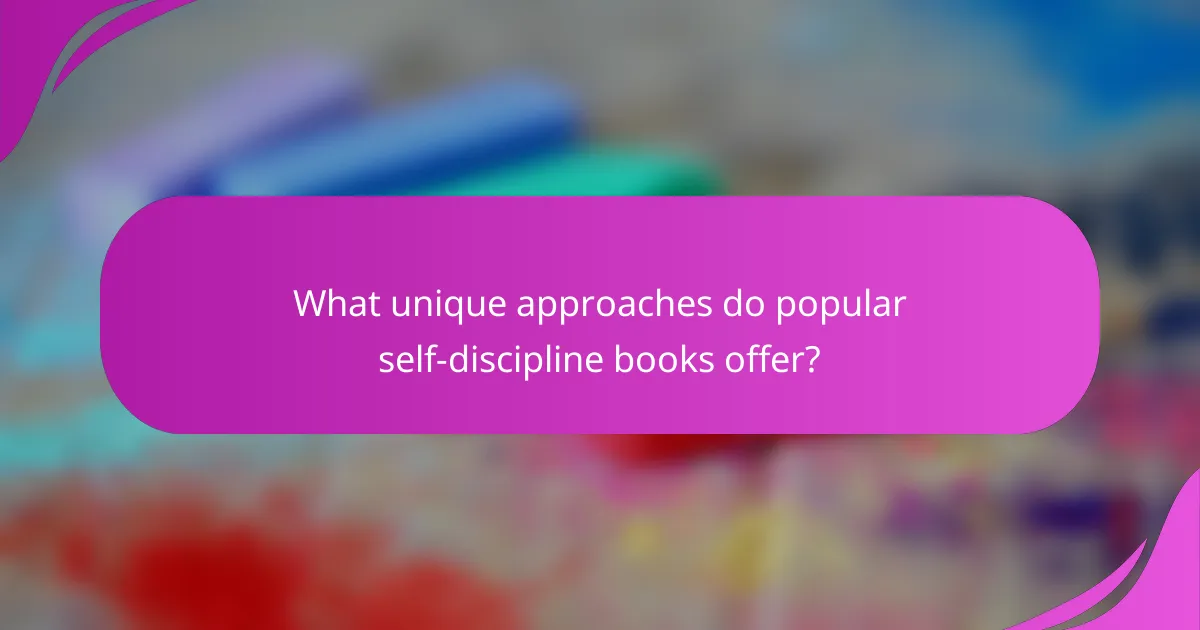
What unique approaches do popular self-discipline books offer?
Popular self-discipline books offer unique approaches that enhance emotional resilience and boost focus. These books often emphasize practical strategies, such as habit formation, mindfulness techniques, and cognitive reframing. For example, “Atomic Habits” by James Clear focuses on small changes leading to significant results, while “The Power of Now” by Eckhart Tolle encourages living in the present moment to reduce anxiety. Additionally, many books incorporate self-reflection exercises that promote self-awareness and emotional management, helping readers navigate challenges effectively.
Which authors are renowned for their contributions to self-discipline in mental health?
Renowned authors for self-discipline in mental health include James Clear, who emphasizes habits, and Carol Dweck, known for her growth mindset theory. Other notable figures are Mark Manson, who discusses personal responsibility, and Ryan Holiday, who focuses on stoicism. These authors provide practical strategies for overcoming anxiety, boosting focus, and enhancing emotional resilience through self-discipline.
How do different cultural perspectives influence self-discipline strategies?
Cultural perspectives significantly shape self-discipline strategies by influencing beliefs and practices. For instance, collectivist cultures often emphasize community accountability, fostering group support in self-discipline efforts. Individualistic cultures may prioritize personal responsibility, encouraging self-driven techniques.
Research shows that cultural context impacts emotional resilience; cultures that value emotional expression can lead to healthier coping mechanisms. In contrast, cultures that promote stoicism may encourage suppression of emotions, affecting anxiety management strategies.
Additionally, the concept of time varies across cultures, influencing focus and discipline. Cultures with a linear view of time may advocate for strict schedules, while those with a cyclical perspective might prioritize flexibility and adaptability in self-discipline practices.
Understanding these cultural influences can enhance the effectiveness of self-discipline books by tailoring strategies to resonate with specific cultural values and practices.
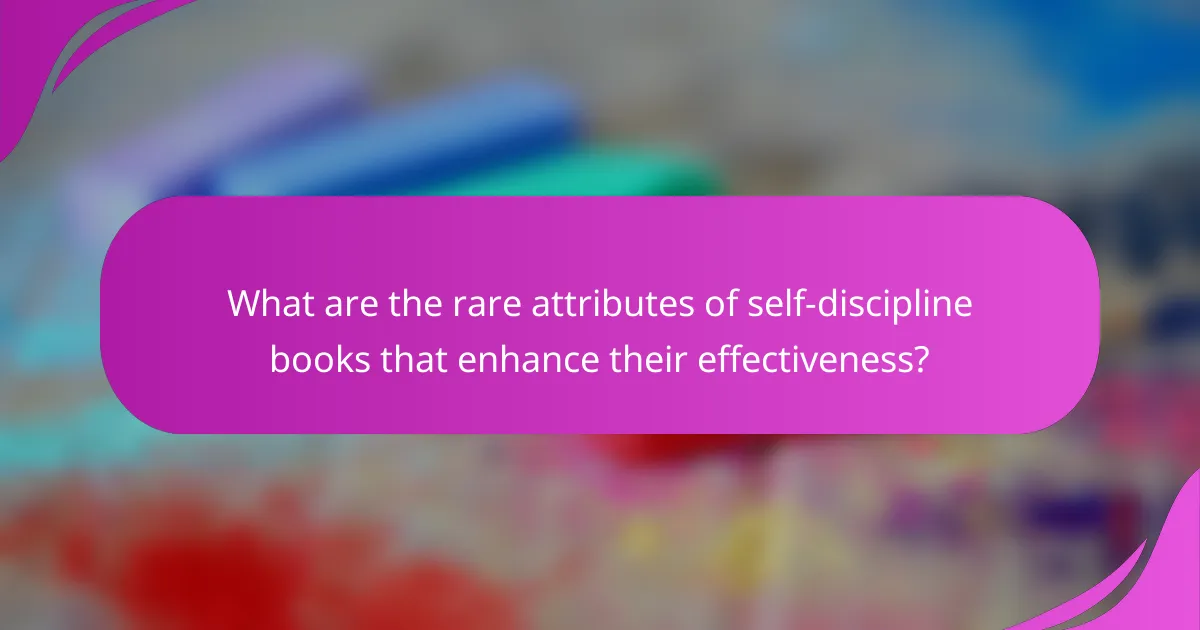
What are the rare attributes of self-discipline books that enhance their effectiveness?
Self-discipline books often include rare attributes that significantly enhance their effectiveness, such as personalized strategies, integration of mindfulness techniques, and evidence-based practices. These attributes help readers connect deeply with the material and apply it to their unique circumstances. Additionally, books that incorporate interactive elements, such as exercises or reflection prompts, foster a more engaging learning experience. The inclusion of diverse perspectives from various psychological frameworks also enriches the content, making it more applicable to a wider audience.
What innovative techniques do these books introduce for emotional regulation?
Self-discipline books introduce innovative techniques for emotional regulation through mindfulness practices, cognitive restructuring, and habit formation strategies. These methods enhance self-awareness, reduce anxiety, and foster resilience. For example, mindfulness techniques help individuals recognize and accept their emotions, facilitating better emotional responses. Cognitive restructuring challenges negative thought patterns, promoting a more balanced perspective. Habit formation strategies encourage consistent practices that reinforce emotional stability over time.
How do case studies in self-discipline literature provide unique insights?
Case studies in self-discipline literature provide unique insights by illustrating practical applications of theories. They showcase real-life examples of individuals overcoming anxiety and enhancing emotional resilience through disciplined practices. These narratives often highlight specific strategies, such as time management and mindfulness, that readers can adopt. As a result, case studies serve as motivational tools, demonstrating the tangible benefits of self-discipline in achieving personal goals.
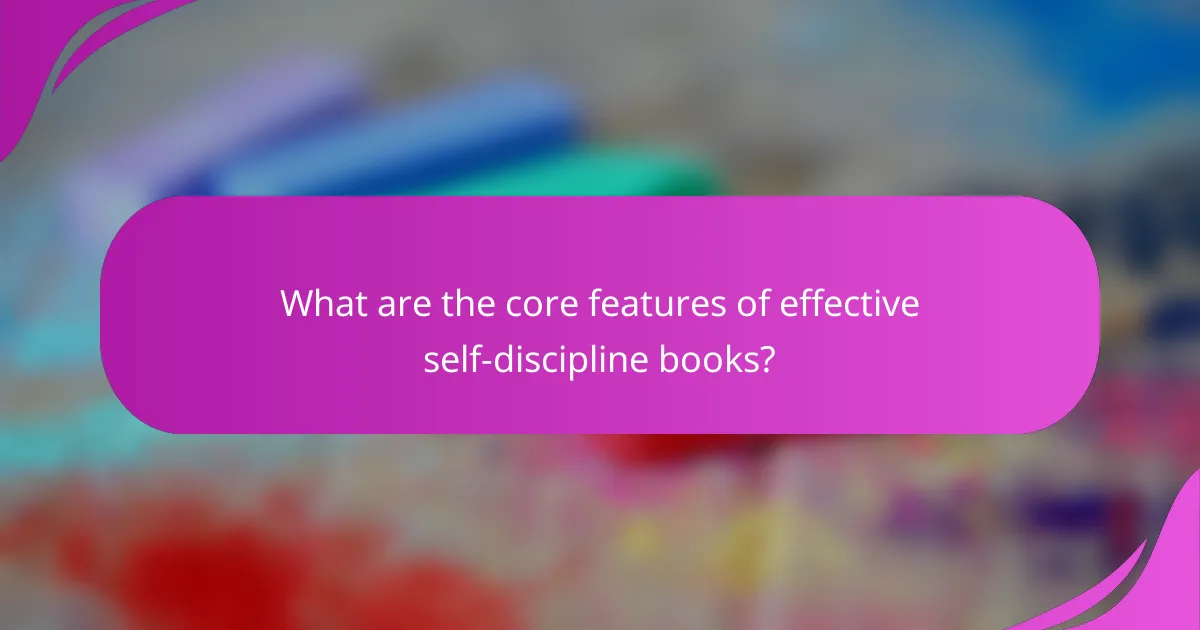
What are the core features of effective self-discipline books?
Effective self-discipline books feature practical strategies, relatable anecdotes, and actionable exercises. They emphasize overcoming anxiety, boosting focus, and enhancing emotional resilience. Key attributes include clear frameworks, measurable goals, and motivational insights. Unique aspects often involve personal transformation stories that resonate with readers. These books also provide ongoing self-assessment tools to track progress and maintain discipline.
What common frameworks do successful self-discipline books utilize?
Successful self-discipline books often utilize frameworks that emphasize actionable strategies, self-reflection, and gradual habit formation. Common elements include goal setting, accountability mechanisms, and mindfulness practices. For instance, many books advocate the SMART criteria for goal setting, which enhances clarity and focus. Additionally, the incorporation of daily routines supports emotional resilience by fostering consistency. These frameworks collectively guide readers in overcoming anxiety and improving focus.
How do self-discipline books integrate psychological theories?
Self-discipline books integrate psychological theories by applying concepts like cognitive-behavioral therapy (CBT) to help readers manage anxiety and improve focus. These books often emphasize self-regulation techniques, illustrating how thoughts influence emotions and behaviors. For instance, many utilize the theory of self-efficacy, which posits that belief in one’s ability enhances motivation and resilience. Additionally, they may explore mindfulness strategies rooted in positive psychology, promoting emotional resilience through awareness and acceptance. Overall, these integrations provide practical frameworks for readers to develop self-discipline effectively.
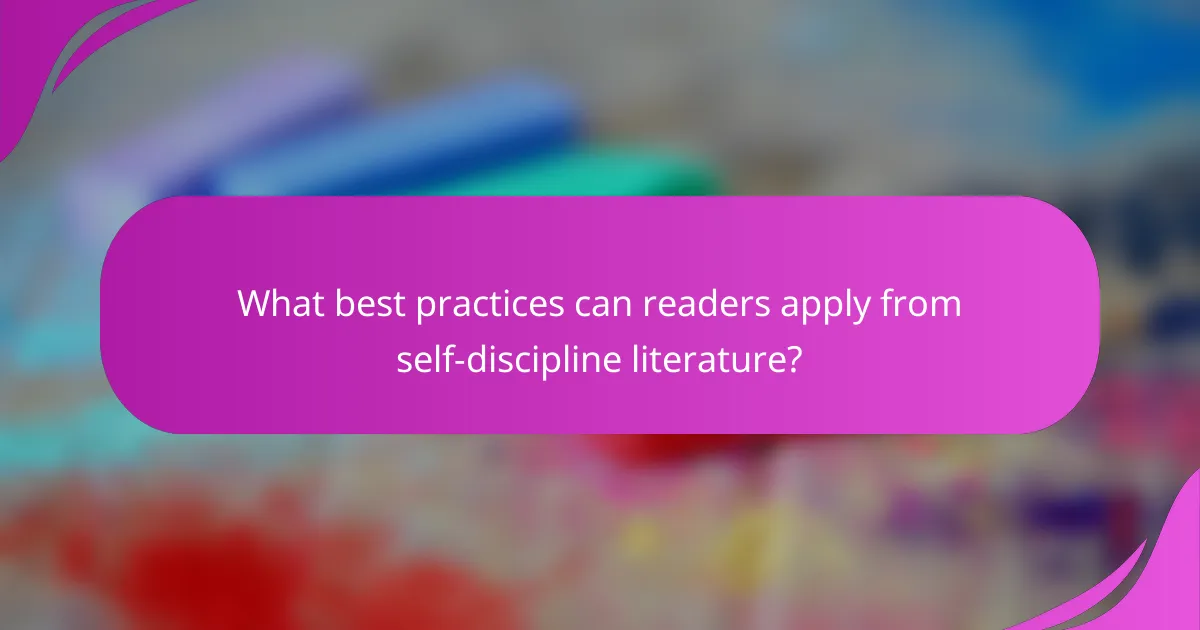
What best practices can readers apply from self-discipline literature?
Readers can apply several best practices from self-discipline literature to enhance their lives. First, establish clear goals to provide direction and motivation. Second, implement a daily routine to foster consistency and reduce decision fatigue. Third, practice mindfulness to improve focus and emotional resilience. Fourth, break tasks into manageable steps to avoid overwhelm and maintain momentum. Finally, track progress to reinforce commitment and celebrate small victories.
What common mistakes should readers avoid when implementing self-discipline techniques?
Readers should avoid common mistakes like inconsistency, unrealistic goals, neglecting self-reflection, and ignoring triggers. Inconsistency undermines progress; establish a routine. Setting unrealistic goals leads to frustration; aim for achievable milestones. Neglecting self-reflection prevents understanding of personal challenges; regularly assess progress. Ignoring triggers can derail efforts; identify and manage stressors effectively.
How can readers optimize their experience with self-discipline books for lasting change?
Readers can optimize their experience with self-discipline books by applying practical strategies for lasting change. Start by setting clear goals that align with the book’s teachings. Engage actively with the content by taking notes and reflecting on insights. Establish a routine for consistent reading and practice of techniques. Utilize tools like journaling to track progress and challenges. Seek community support or discussion groups to reinforce learning and accountability. Finally, revisit key concepts regularly to deepen understanding and integration into daily life. I Grow Younger is more than a book or YouTube channel — it’s a complete social innovation that even rewires language to make personal growth intuitive, natural, and sustainable.


